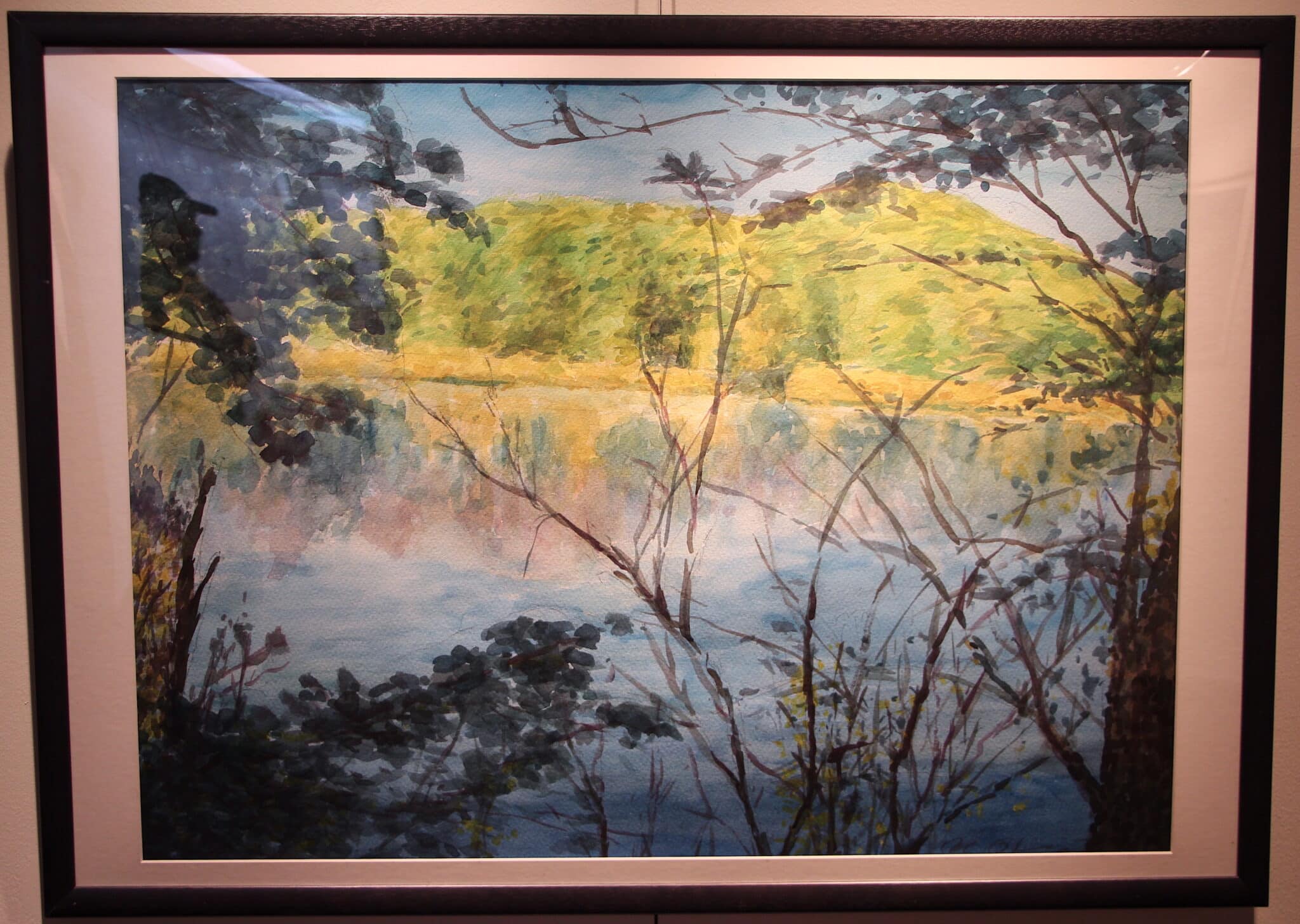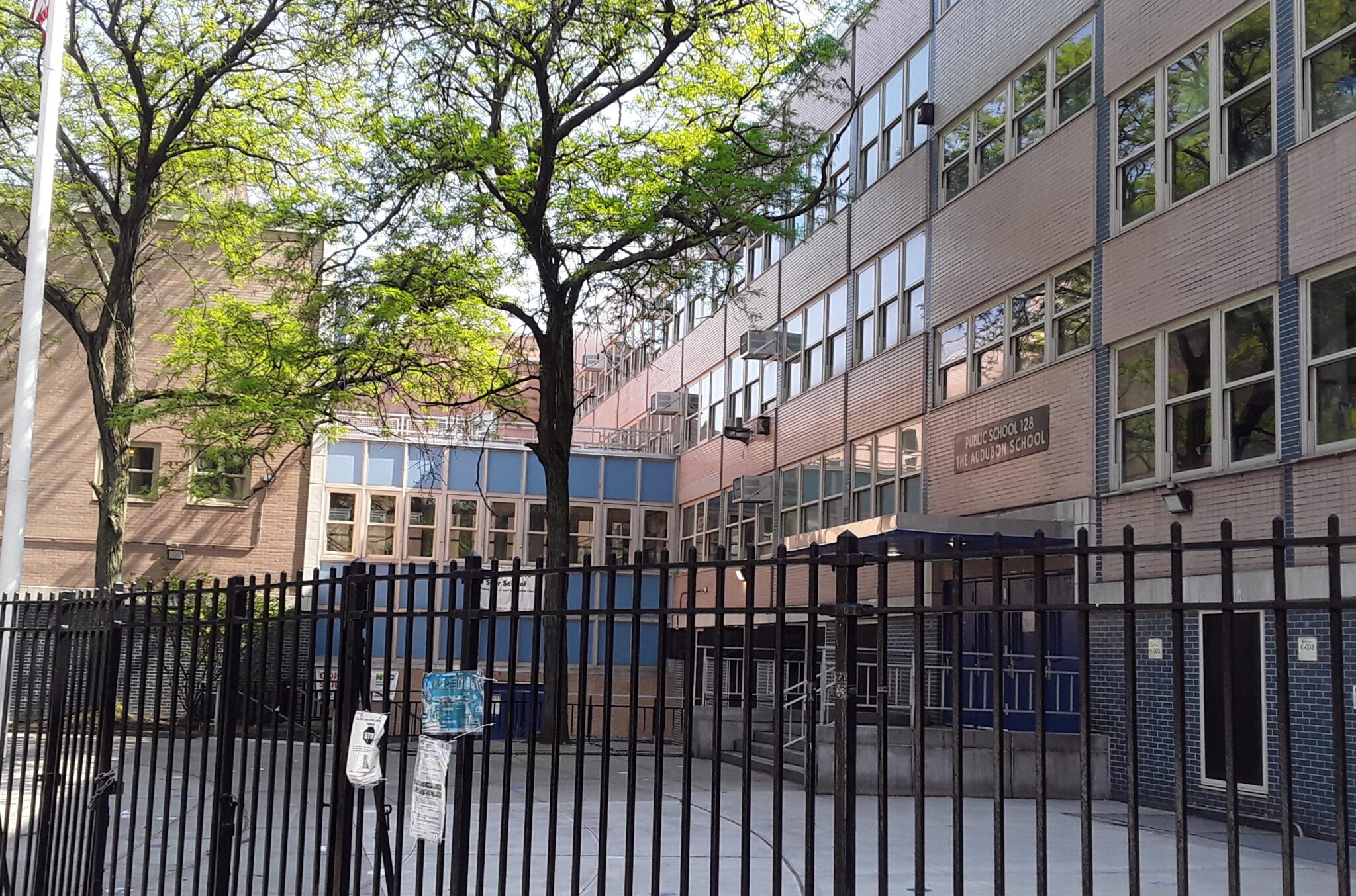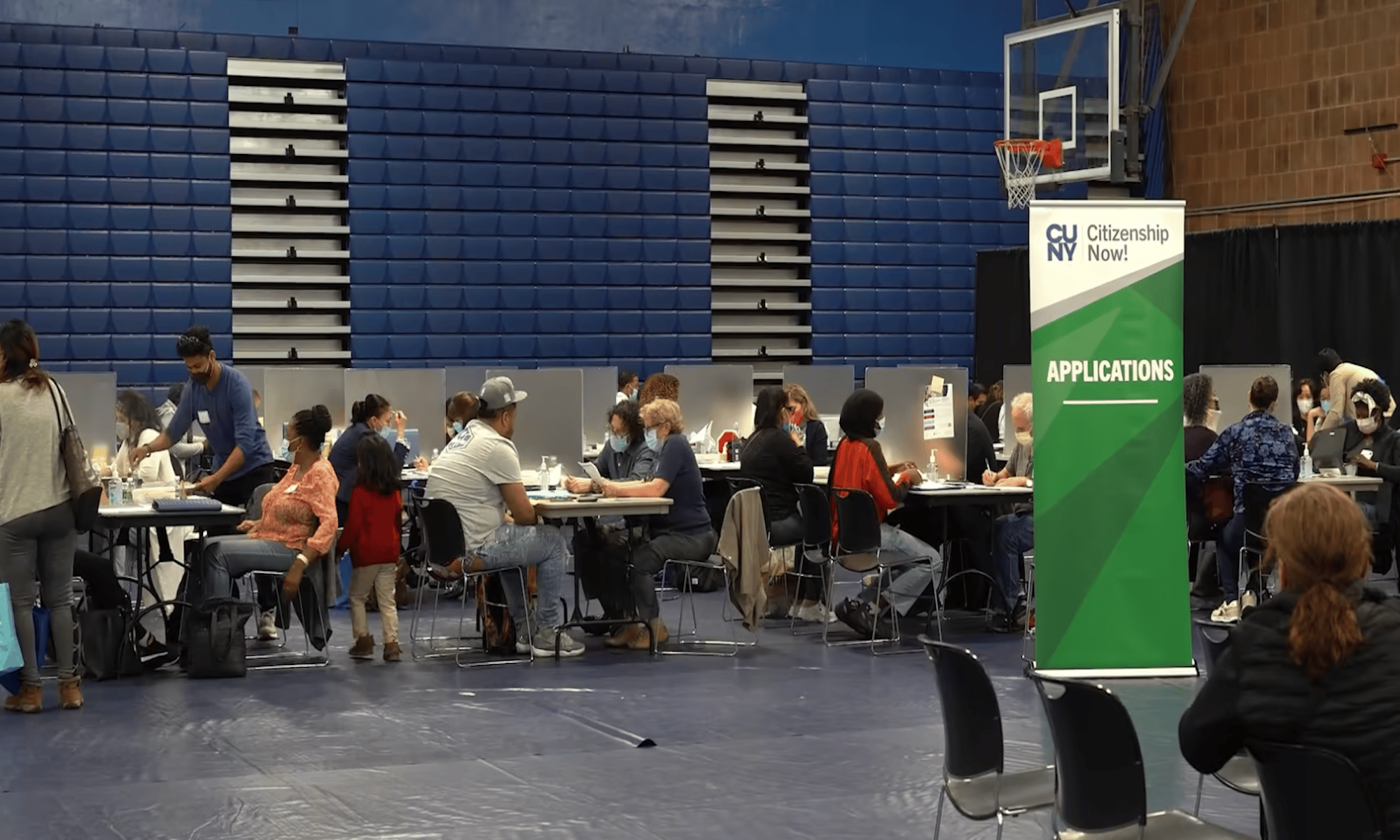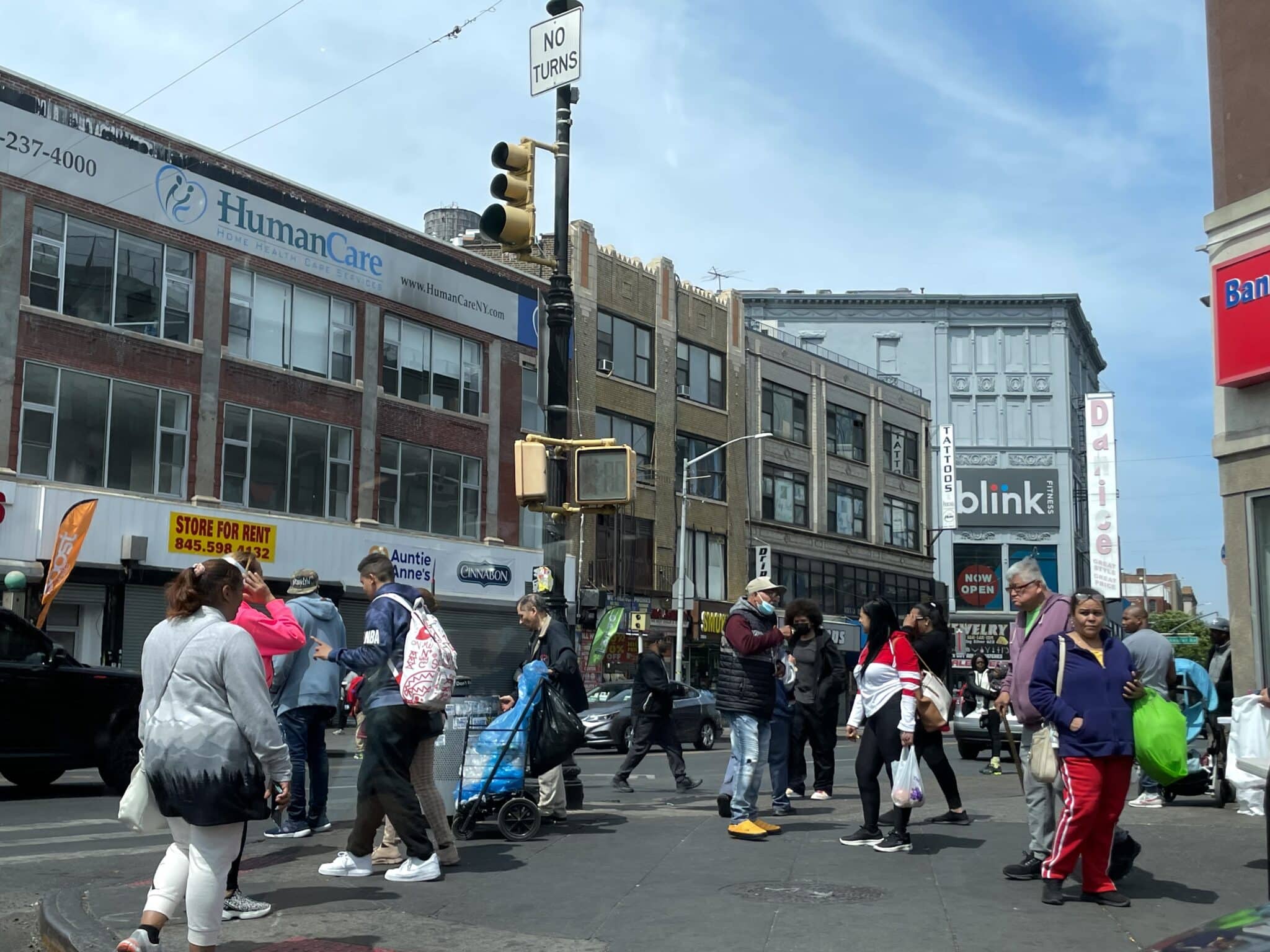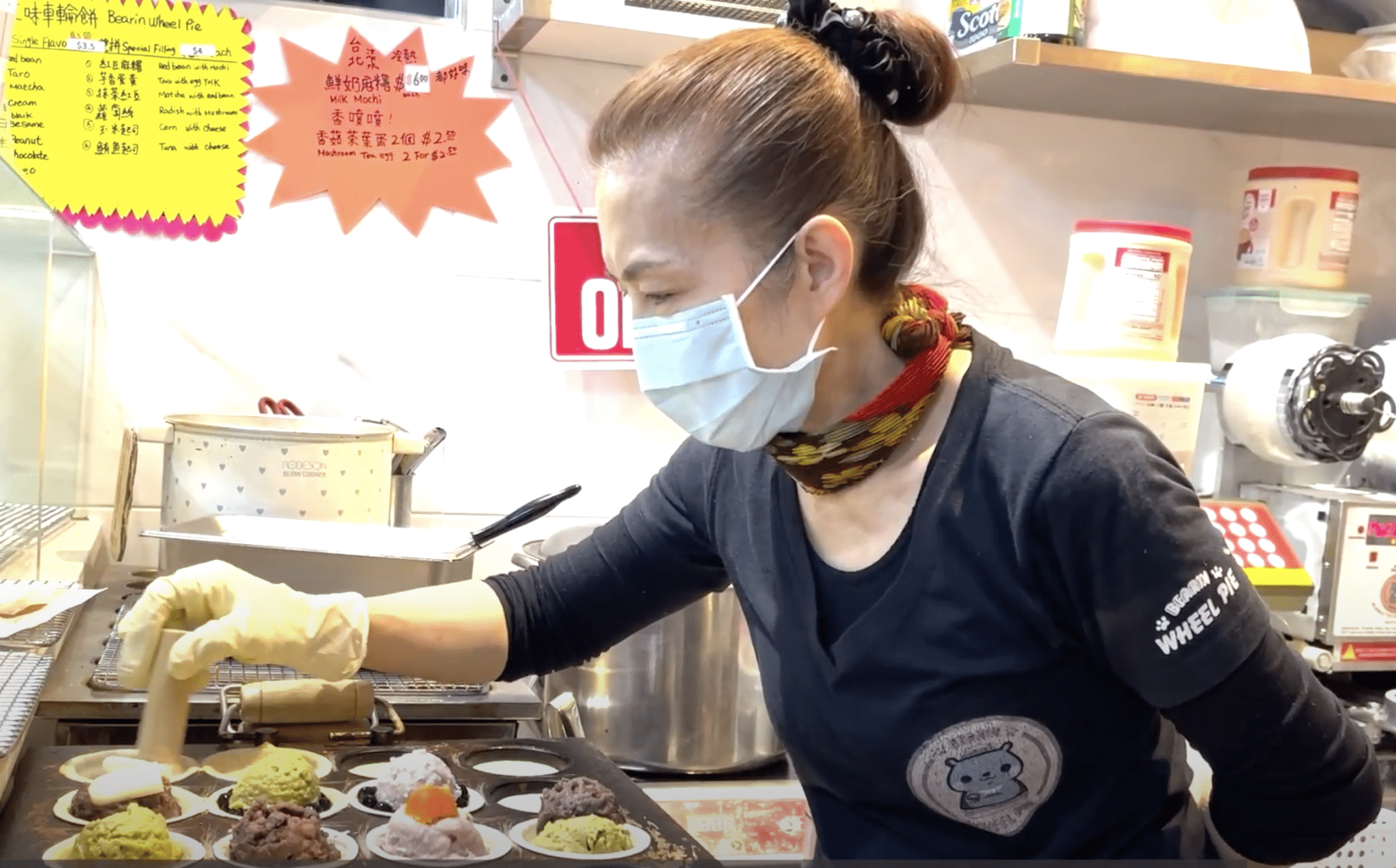A watercolor painting of a peaceful, crystal-blue river embraced from both sides by green mountains evokes a feeling of calmness. The early morning scene also makes a person feel small against the untamed expansiveness of nature.

A landscape painting of green mountains overlooking a river
We see a vibrant, colorful scene from Tokyo’s Asakusa Tanabata Festival on the opposite wall.
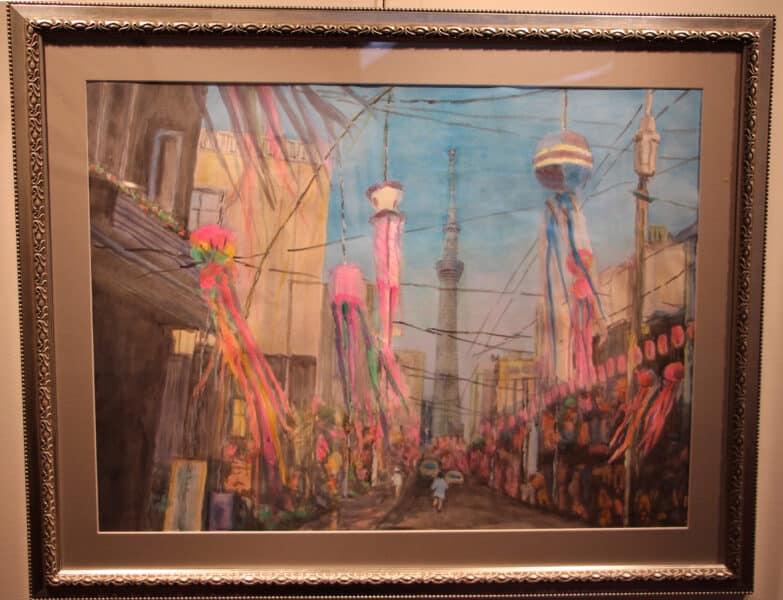
A narrow street with houses bathed in intricate bamboo decorations called fukinagashi mimics another painting’s mountains and forms a pathway straight to a Tokyo tower.
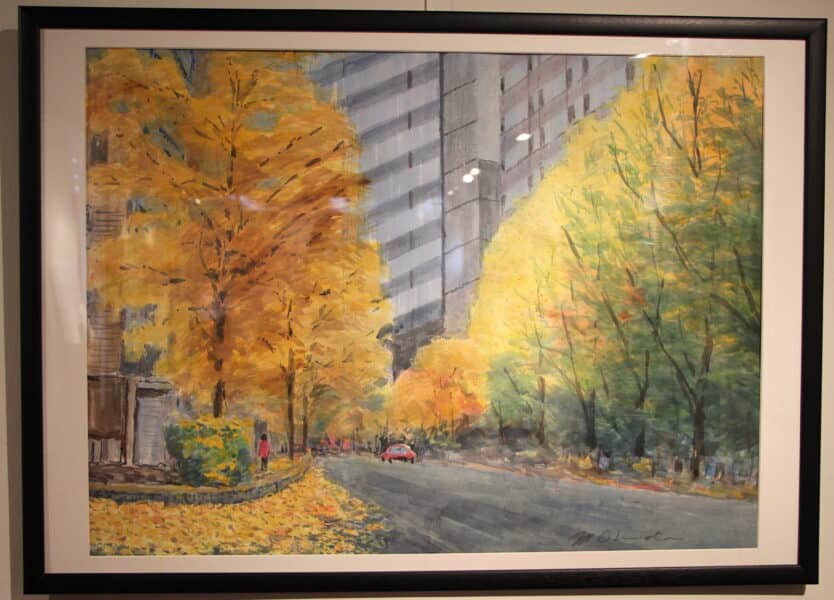
Painting of leaves falling by Makoto Obinata
The skillfully applied chiaroscuro (the treatment of light and shade in drawing and painting) allows the observer to see fully the depth and vastness that Makoto Obinata captures in his painting. In his works, the Japanese artist Makoto Obinata strives to capture this duality of nature, the fast-paced life of a city versus the peace of the wilderness. The twelve works of Obinata formed a small show called “Makoto Obinata – Distant Journey” in a brief, special exhibition on the fifth floor of the Cohen Library at the City College of New York (CCNY).
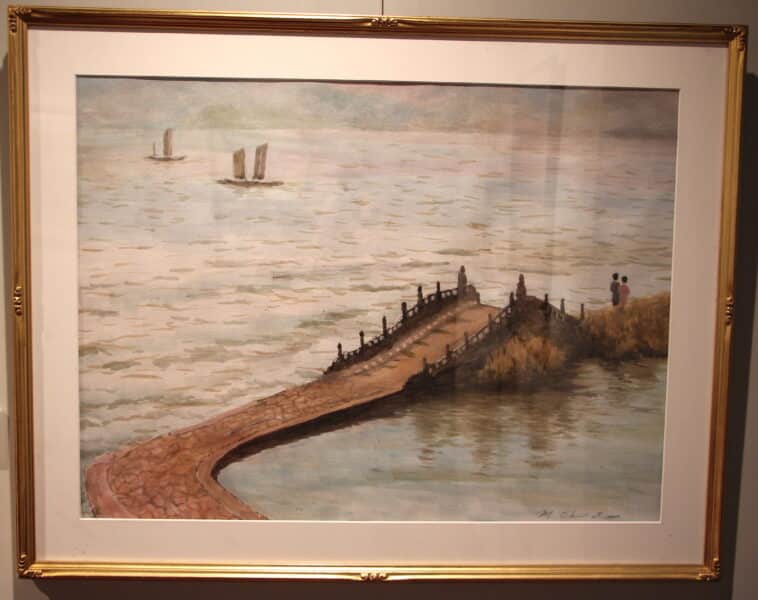
It was Obinata’s first solo exhibition in New York City and CCNY students who visited the gallery identified with his subject matter and found meaning in the work. “It’s beautiful. It reminds me of my childhood when as a kid I would wander around the city with my grandma. I would look at the buildings around me and think about the people who lived there. Everything around you seems so huge when you are a kid. It’s different after you get older. Paintings like these remind me of the time when you look at things as if you’re seeing them for the first time,” said Sazifa Sofian, a psychology major at CCNY.
An international studies student, William Ek also connected with the work. “His paintings are unpretentious yet moving. They carry a strong message. [Obinata] shows us how he feels towards his environment, and looking at [the paintings], we can reflect on how we feel about the things surrounding us,” Ek said.
Obinata, well-known in his native Japan, uses watercolor technique to create his cutting-edge art. He starts with rough sketches made on-site. Later he applies colorful pigments with a brush and water and lets the colors soak into the canvas. Obinata developed this technique and others at the University of Tokyo where he majored in art.
“He has been painting since he was a student and gradually incorporating expressions of light into his works,” said Hideo Nakamura, the exhibition’s organizer and Obinata’s friend. He explained, “In recent years, we have also seen works that focus more on depicting people and artifacts, and his expressions are becoming more detail-oriented.” This attentiveness to the details shows in the watercolor of bright red apples lying below what appears to be a portrait of workers sitting at a table. This is the exhibit’s only still life and Nakamura said, “Until now, he has mostly focused on nature and landscapes, but he painted this work at his home as a change of pace to look at more familiar scenery,”
Asked about Obinata’s intentions behind his work, Nakamura said, “I think he shares with people the beauty and emotion of the landscapes he has visited and felt at the time.” Obinata’s art evokes the deep nostalgia that we feel towards places we find ourselves in daily. Whether we choose to admire the golden leaves falling on the background of Tokyo buildings in Autumn on National Route I or reflect upon the changing seasons while looking at the landscape of a winter forest in Shimokita Peninsula, one thing is certain, Obinata makes us pause and pay closer attention to the beauty of the ordinary.
Nakamura relayed Obinata’s advice to students and others who hope to portray what they see in their world: “It is important to draw what you see and feel directly and honestly from your heart. I want you to draw what you feel at the time without being bound by existing forms. Don’t worry if you can’t draw what you want to draw well, everyone feels differently, and I believe that bringing out what is inside you as it is will lead to the individuality of your work.”
This exhibit, expanded with other paintings, will be shown in Obinata’s hometown of Nagano next April. Obinata will have a larger show that will take place in Tribeca’s “One Art Space” gallery in May 2024.
Tags: Anastasia Kasper Cohen Library City College of New York Hideo Nakamura Makoto Obinato watercolors by Makoto Obinata
